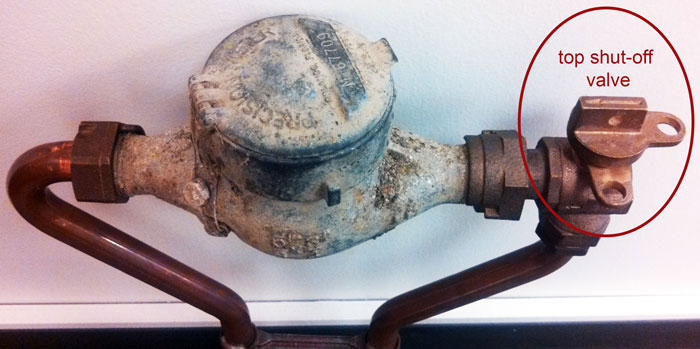We have noticed this post involving 3 Tips To Prevent Water And Storm Damage directly below on the net and accepted it made perfect sense to discuss it with you in this article.

The plumbing system of your residence is an intricate network of pipelines and shut-off valves. In the event of an emergency, you can reduce the water making use of the shutoffs.
Why Must I Fret about This?
Your bathroom sink is malfunctioning, so you can easily locate the shut-off valve underneath the sink. For major leaks, you have to shut the mainline shut-off valve.
The longer you wait to shut the shut-off valve, the extra substantial the damage will certainly be. You may not have adequate time to figure out just how to close the valves when you're panicking in the middle of an emergency.
What Does the Shut-Off Shutoff Appear Like?
This is typically a handle that permits you to turn off the water for a specific appliance, a local area (for example the whole 2nd floor), or for the entire residential or commercial property. It is vital to know where these valves are, so when something turn up in any area of your house, you can shut it right away. This will assist you avoid substantial water damages that will cost thousands to repair.
Where are These Located?
Your finest wager is to call a water restoration services business for advice. If you have a fairly moderate-sized home, attempt looking for a handle or lever.
Commonly, contractors mount the shutoffs near or within the major, ground-floor bathrooms. The valves are expected to be visible, some choose to camouflage them for aesthetic reasons.
When to Call a Professional?
Should the aforementioned be the case for your localized valves, you have no other option however to shut down the major water line, cutting the source of water in your whole house. After that call the plumber to inspect the issue and also shut down the valve because area just so you can use the remainder of the plumbing in other locations of your residence.
Keep in mind, these valves are lifesavers as well as necessary for any plumbing fixing. You can turn them off if you identify any kind of leaks to avoid additional damage. Your home can get flooded not only through all-natural catastrophes yet as a result of a ruptured pipeline. In the event of a plumbing emergency, shut down these valves to avoid problems that call a reputable water damages remediation service provider.
The plumbing system of your residence is a detailed network of pipelines and shut-off shutoffs. In the event of an emergency, you can reduce the water utilizing the shutoffs. The longer you wait to close the shut-off shutoff, the more substantial the damage will be. It is essential to understand where these shutoffs are, so when something plants up in any area of your residence, you can close it right away. In the event of a plumbing emergency, closed down these shutoffs to stop problems that call a trustworthy water damages reconstruction provider.
Where is My Main Water Shut Off Valve? And How Do I Turn it Off?
What is the Main Water Shut Off Valve?
The main water shut off valve controls the flow of fresh water into your entire home. Water arrives at your home from a public source of water like your municipality’s water supply. Sometimes, it comes from a private source like a well.
Water first has to get past a gatekeeper to flow through your pipes and find its way to the rest of the house. That gatekeeper is your main water shut off valve. When turned on, the flow of water is available everywhere in your home. When turned off, water is no longer available in your home.
There also are water shut off valves that control the flow of water into a specific fixture (as opposed to the entire house). The shut off valves under your toilet, kitchen sink, or washing machine are three examples.
Where is the Main Water Shut Off Valve?
The main valve for your water supply is usually found in the basement or utility room near the water meter, water heater, or on the front wall closest to the street.
In older apartment buildings, the main water supply valve is located in the basement. However, in some new buildings, main water supply valves are located on each floor in the utility room.
Wait, you don’t have a basement? No problem. Check one of your closets. It’s often found in the closet closest to the front door but could be in any utility closet. If you still can’t find it, look around your water heater (which might also be in a closet).
To make sure you’ve marked the correct valve, turn on a sink faucet and then shut off the main valve. If the water from the sink stops, then you’ve found the right valve.
Gate Valve
This type of shut off valve has a wheel-shaped know handle (or knob). It is most often found in older homes. It can be difficult to turn if it is dirty or has not been used in a long time.
Ball Valve
This type of shut off valve is more commonly seen in newer homes. It has a lever handle that requires only a quarter turn to shut it off. If installed properly, the lever is in line with the pipe that it’s attached to when turned on. When turned off, the lever is perpendicular (at a 90-degree right angle) to the pipe.
https://www.1tomplumber.com/where-main-water-shut-off-valve/

I recently found that blog posting on 3 Ways To Prepare Your Home For Storms when doing research the web. Sharing is good. Helping people is fun. Thanks so much for your time spent reading it.
Pipe issues? Connect.